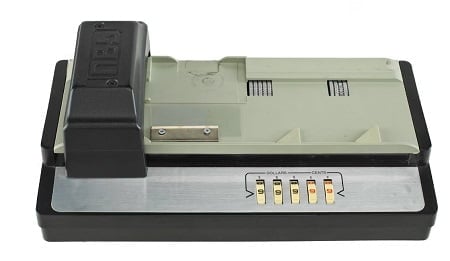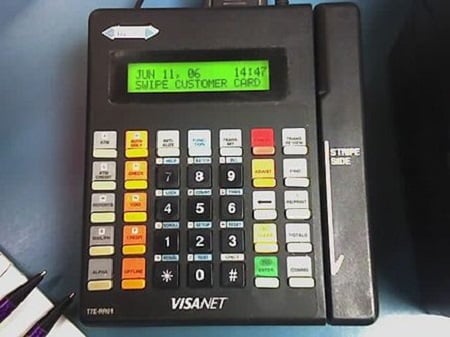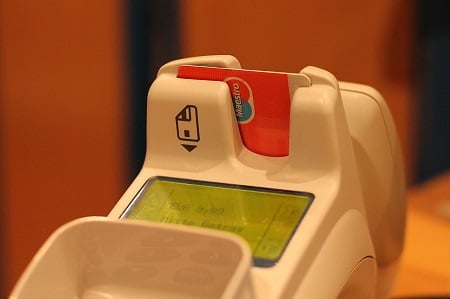The evolution of credit card terminals in retail from 1979 to 2021
SumUp – The electronic card machine has become one of the most popular conveniences of modern life. Most of us swipe our cards at the checkout without a second thought. But when were credit card terminals first introduced and how did they change the way payments were made for both the retail store and the individual?
The advancement of credit card payment terminals happened very quickly from 1979. They offered better convenience, faster and secure payments, and negated the need to carry cash.
In this article, we will explore the major moments in the evolution of credit card terminals.
What is a Credit Card Terminal?
Credit card terminals are machines used by business owners to process credit card payments from customers in the most convenient way possible. When the card is swiped or tapped, the card terminal will read the information presented on the card’s magnetic strip.
This information will be sent for verification, prompting either an “approved” or “declined” message on the terminal screen so that merchants can either progress with or block the sale.
Card machines were introduced for both convenience and to protect merchants against customers attempting to use expired, stolen, or damaged cards. Most stores today have anywhere from one card reader to dozens.
The Very First Card Machines

Source: Pinterest
When card machines first came on the scene, they weren’t so much machines as manual printers. Merchants would fill out a form and place it in the machine. The card would be placed underneath the form and the imprinter mechanism ran over the top to “imprint” the card numbers and name onto the form. The completed form would then be signed by the customer before being mailed to the bank to receive payment.
1979
Introducing the Point-of-Service Terminal

Source: Visa
1979 was the year of payment improvements and also saw the introduction of the electronic Point-of-Sale terminal that greatly solved the issue of manual processing. Now, what had been an extremely time-consuming task was far easier.
Although bulky, it allowed merchants to capture customer data and payments electronically. This drastically reduced the time required to process a credit card payment.
From the 1970s, electronic cash registers dominated the market and paved the way for the development of the card terminals we know and use today.
Chip and PIN

Source: Pixabay
MasterCharge became MasterCard and replaced their existing credit cards with new credit cards that included a magnetic information stripe. Today, this is known as the chip and PIN. It was also in this year that magnetic stripes were added to the backs of credit cards to allow for easier and faster data capturing.
2007
Contactless Payment Methods
The very first electronic credit card machines were attached to a landline connection, requiring them to be fixed in place. So, although contactless payments have technically been around since the 1990s, it wasn’t until 2007 that they became commonplace.
Today, most customers prefer paying by contactless payments and statistics show that in 2020, contactless card payments accounted for around 90% of payments in the UK!
2020
The Death of Cash Payments
“To succeed in this post-pandemic world, brands will need to understand and adapt to these new and lasting shifts in consumer behaviour.” – Stackla
The sudden and unexpected rise of COVID-19 required payment systems to develop and innovate further. Lockdown and the fear of spreading or catching covid meant consumers and businesses embraced card technology at an accelerated rate.
During 2020, most businesses refused to accept cash payments in order to reduce the risk of contamination, accelerating the uptake rate of new credit card technology. As society has adjusted to cashless payments, future projections suggest that a wholly cashless society might soon be a reality.
2021
Payment Terminals Today

Source: SumUp Solo
As payment terminals have evolved, they have developed into sleeker devices with short and long-distance wireless capabilities, and even multiple payment functions (such as mobile or Apple Pay).
Isn’t it amazing when you stop to consider how much payment terminals have evolved over time, particularly when the device didn’t exist before 1979!
What Does the Future Hold?
More than ever, consumers are now using their smartphones as payment devices. While the payment terminal has come a long way since 1979, it continues to develop as consumers’ needs and demands change.
Today, consumers have more choices than ever. From touchscreen tablets and wireless terminals to online payments and social shopping, the list is endless.
The future holds endless possibilities and room for technology innovation. The demand for increased processing speed, better reliability, and improved security measures are all strong driving forces behind credit card terminal advancement into the future. For businesses to grow, innovation will be essential in an ever-evolving digital world.
To find out how SumUp can help your retail operation, click here.














